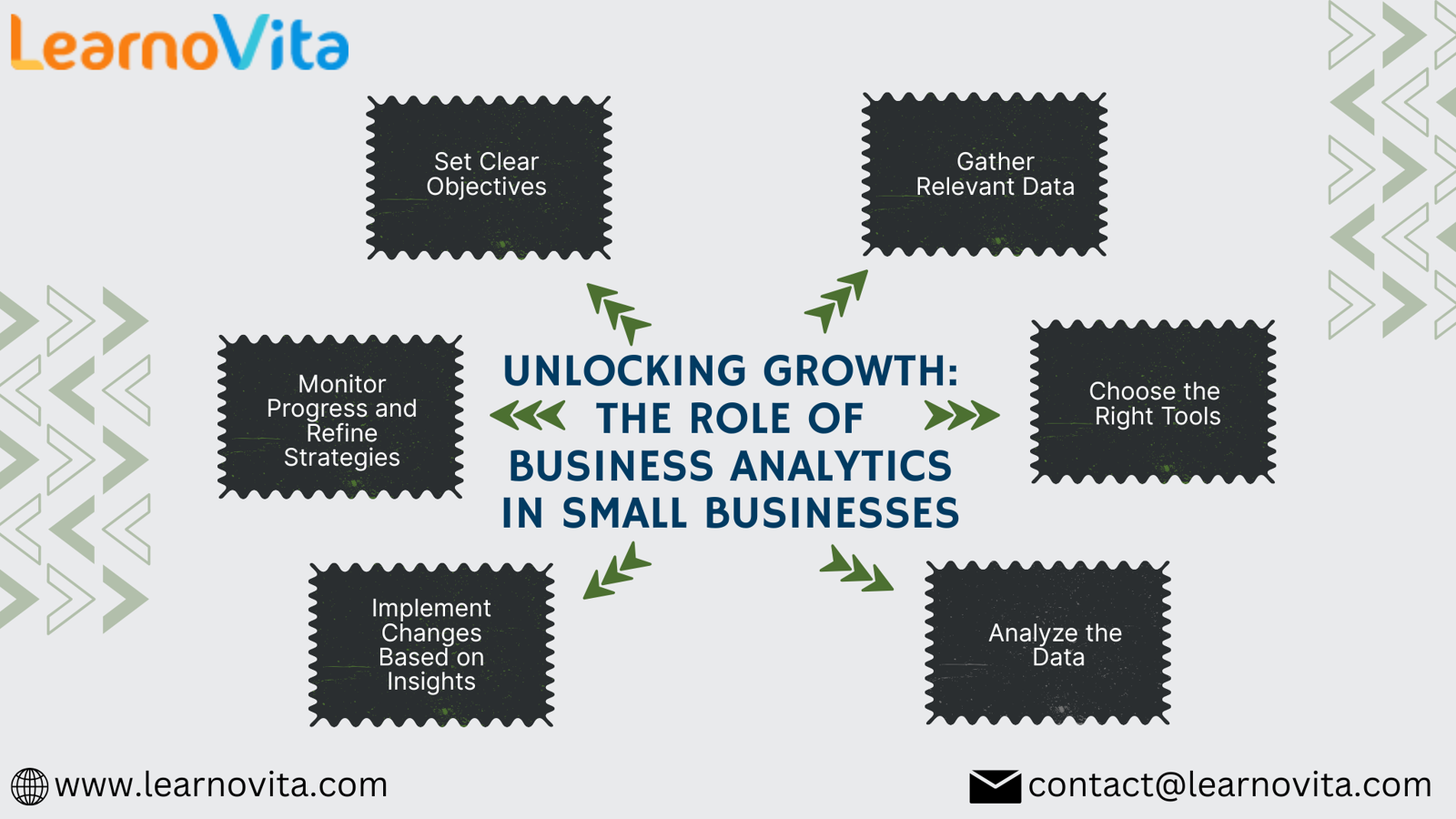Unlocking Growth: The Role of Business Analytics in Small Businesses
In the fast-paced world of small business, growth is a constant goal. With the power of business analytics, small enterprises can unlock new opportunities and enhance their competitive edge. By leveraging data effectively, businesses can make informed decisions, better understand their customers, and streamline operations. This blog explores the crucial role that business analytics plays in driving growth for small businesses.
If you want to excel in this career path, then it is recommended that you upgrade your skills and knowledge regularly with the latest Business Analytics Online Course.

What Is Business Analytics?
Business analytics is the process of collecting, analyzing, and interpreting data to gain insights that inform business decisions. For small businesses, these insights can lead to operational improvements, enhanced customer experiences, and ultimately, increased revenue.
Why Business Analytics Matters for Small Businesses
-
Informed Decision-Making: Data-driven decision-making replaces guesswork with actionable insights. This leads to better strategies and more effective resource allocation.
-
Understanding Customer Behavior: By analyzing customer data, small businesses can gain insights into preferences, behaviors, and purchasing patterns. This understanding is vital for tailoring marketing efforts and service offerings.
-
Operational Efficiency: Analytics can reveal inefficiencies in business operations. Identifying these areas allows small businesses to streamline processes, reduce waste, and improve overall productivity.
-
Anticipating Market Trends: Business analytics enables small enterprises to stay ahead of market trends and shifts in consumer behavior, allowing for quicker adaptations to changing conditions.
How to Implement Business Analytics
1. Set Clear Goals
Before diving into analytics, it’s imperative to define what you hope to achieve. Whether it’s boosting sales, improving customer satisfaction, or optimizing supply chain management, clear goals will focus your analytical efforts.
2. Gather Relevant Data
Collect data from diverse sources, such as:
- Sales Transactions: Analyze which products are performing well and which ones need re-evaluation.
- Customer Feedback: Use surveys, reviews, and social media to gather insights on customer satisfaction.
- Web Analytics: Tools like Google Analytics can provide details about website traffic and user behavior.
With the aid of Best Software Training Institute programs, which offer comprehensive training and job placement support to anyone looking to develop their talents, it’s easier to learn this tool and advance your career.

3. Choose Appropriate Tools
Select analytics tools that align with your business needs. Options include:
- CRM Systems: To track customer interactions and sales data.
- Data Visualization Tools: Software like Tableau or Microsoft Power BI can help you visualize trends and insights.
- Web Analytics Platforms: These track online behavior and provide insights on site performance.
4. Analyze the Data
Once you have gathered your data, it’s time to analyze it. Look for trends, patterns, and insights that can inform your business strategies. Key metrics to consider may include:
- Sales growth rates
- Customer acquisition costs
- Customer retention rates
5. Take Action
The true value of analytics lies in its application. Use your insights to make strategic changes, such as:
- Adjusting marketing strategies to better target high-value customers.
- Optimizing inventory to ensure popular products are always available.
- Enhancing customer experiences based on feedback.
6. Monitor and Adapt
Analytics is an ongoing process. Continuously track your key performance indicators (KPIs) and be ready to adapt your strategies based on new insights. This flexibility allows businesses to remain responsive to changes in the market.
Case Study: Success Through Analytics
Take, for instance, a small boutique that struggled with seasonal inventory. By implementing business analytics, they analyzed customer purchases and discovered that certain items were consistently popular during specific seasons.
With this knowledge, the boutique adjusted its inventory strategy, focusing on stocking popular items ahead of peak seasons. This data-driven decision led to improved sales, reduced excess inventory, and enhanced customer satisfaction.
Conclusion
In the realm of small business, leveraging business analytics can be a game changer. By transforming data into actionable insights, small enterprises can make informed decisions, enhance customer experiences, and streamline operations.
Starting with clear objectives and leveraging the right tools, small businesses can effectively unlock growth opportunities. Embrace the power of analytics, and watch your business thrive in today's competitive landscape.
- Art
- Causes
- Crafts
- Dance
- Drinks
- Film
- Fitness
- Food
- Games
- Gardening
- Health
- Home
- Literature
- Music
- Networking
- Other
- Party
- Religion
- Shopping
- Sports
- Theater
- Wellness



